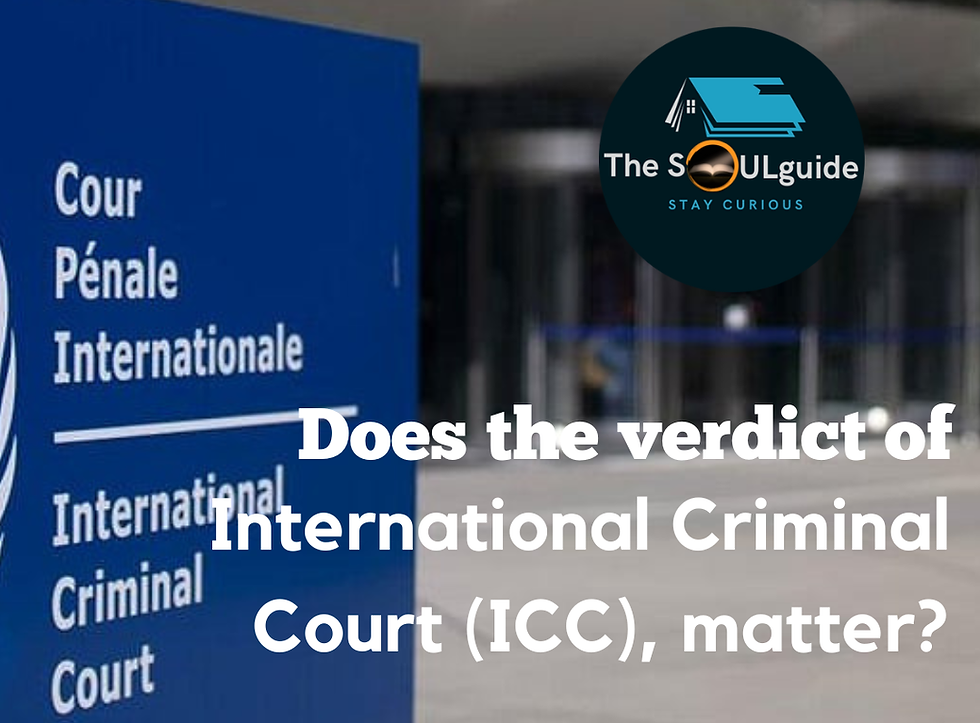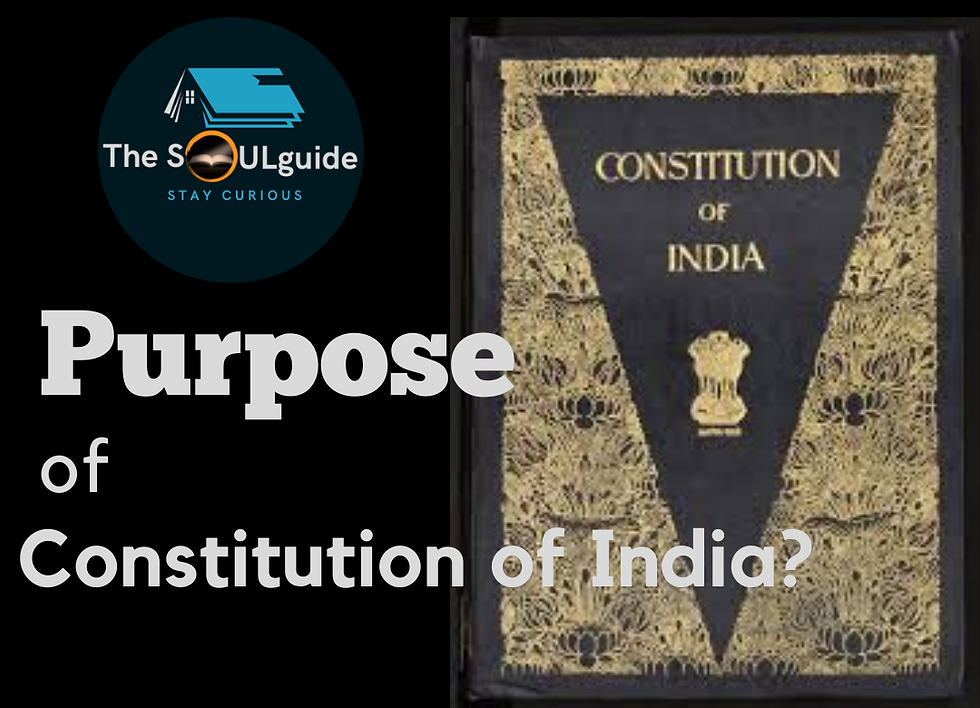Operation Vijay-The Kargil War of 1999
- TheSoulGuide

- Oct 6, 2022
- 5 min read
Updated: Nov 7, 2022
(The curation and accuracy of facts in this blog is at the discretion of Author)
As is the usual case with Pakistan, that is attacking India through terrorism or over the LOC through Army, thinking they will succeed in their inhumane acts. That is not the case though after that acts are done because the thinking changes OfCourse when your intentions are ill the fortune is also not going to favor you.
Also, as the world specially the west lectures India to be on the right side of the history for the Russia-Ukraine war, this west was playing some double games and had done the same in the past whenever so-called clever Pakistan has tried attacking India.
The story is of the Kargil war which was provoked by Pakistan by trying to capture the Kargil area in the earlier state now UT of Jammu and Kashmir.

What is Kargil war?
The Kargil War, also known as the Kargil conflict, was an armed conflict between India and Pakistan that took place between May and July 1999 in the Kargil district of Kashmir.
This war is one of the most recent examples of high-altitude warfare in mountainous terrain and posed significant logistical problems for the combating sides. This was the first ground war between the two countries after they had developed nuclear weapons. The conflict led to heightened tensions between the two nations and increased defense spending on the part of India. The cause of the war was the infiltration of Pakistani soldiers and Kashmiri militants into positions on the Indian side of the line of control, which serves as the de facto border between the two nations. Pakistan blamed the fighting entirely on independent Kashmiri insurgents; however, documents left behind by casualties and later statements by Pakistan’s prime minister and chief of army staff showed involvement of Pakistani paramilitary forces led by General Ashraf Rashid.
The Indian army, supported by the Air force, attacked the Pakistani positions and, with international diplomatic support, eventually forced a Pakistani withdrawal across the line of control .During the war Indian army evicted Pakistani intruders and succeeded in recapturing the Tiger hill and other posts as part of Operation Vijay the Indian soldiers had secured this victory after 3-month conflict that led to a loss of life from both sides with the Indian side losing nearly 490 officer's soldiers and jawans.
The Indian Army raised the winning flag in the Kargil battle, dubbed "Operation Vijay" On Kargil Vijay Diwas, we remember their valor and courage.
On the peaks of Kargil, Pakistan had set itself in a very comfortably strategic position, targeting all that was Indian, on the ground level. Being on a height, the Pakistani forces could destroy everything that it would see on the road underneath. With this advantageous position, Pakistan was sure to score against India who, though caught napping and unawares took up the cudgels as soon and as well as possible. The Indian Air Force came to the country’s rescue and from the height of the skies only, hit hard at the Pakistani forces. This is because it was only from the height of the skies could the height of the Kargil peaks be encountered.
Pakistan’s strategy had been built around internalizing the Kashmir issue and simultaneously undermining the sanctity of the LOC, which had been in existence for 27 years. Pakistani planners believed that with the Kargil operation, they might secure the intervention of the UN or a third party as they had succeeded in doing earlier in the 1947-48 and 1965 operations. The severing of the Srinagar-Kargil-Leh artery that facilitated build-up of supplies and troops would have not only affected Leh and Siachen but also prevented side-stepping of military resources to the Kargil sector once the battle was joined with the Indian forces.
The Indian Army, later supported by the Indian Air force recaptured a majority of the position on the Indian side of LOC facing international diplomatic opposition Pakistan forces with you from all remaining Indian position along the LOC. The main objective of the Pakistani military for carrying out the intrusions was to rely on the exploitation of the large gaps that exist in the defenses in the sector both on the engine and Pakistani side of line of control.
There were three major faces in the Kargil war in the first, Indian control section of Kashmir Pakistan captured which is static the high point, second one is where India responded by first capturing strategic transportation rules and third and the final one was the military pushing Pakistani forces out of Line of control.
"Our flags does not fly because the wind moves it, it flies with the last breath of each soldier who died protecting it"
Role of Army, Air force and Navy
The Indian Air force launched operation Safed Sagar in support of the mobilization of Indian Forces on 26 May. The Indian government too cleared limited use of Air power only on 25 May for fear of undesirable escalation with the flat that IAF fighter jets were not to cross the LOC under any circumstance.
By 30th June 1999 Indian forces were prepared for a major high-altitude offensive against Pakistani post along the border in the disputed Kashmir region over the period of previous 6 weeks in the head moved 5 infantry divisions 5 independent brigade and 44 battalions of paramilitary troops in Kashmir around 73000 total Indian tube strength had reached the region. Also, the build-up included the deployment of around 60 frontline aircraft.
Along with the Indian Army and Indian Air force, The Indian Navy to played a tremendous role by blocking Pakistani ports primarily The Karachi port to cut off supply routes under Operation Talwar. The Indian Navy's Western and eastern fleets joined in the North Arabian Sea and began aggressive patrols and threatened to cut Pakistani's sea trade. This exploited dependence on sea bass oil trade flows.
Kargil War was a limited war and the first of its kind after India and Pakistan acquired nuclear weapons capabilities. on July 26 every year, Vijay Diwas is celebrated to commemorate and give glowing tributes to the soldiers who laid down their lives to ensure India’s victory in the historic Kargil War. The heroes of this conflict are remembered and honored on this day all over the country. Prime Minister, on behalf of the citizens of India, pays homage to the fallen soldiers at Amar Jawan Jyoti, National War Memorial, New Delhi. India and Pakistan signed the Lahore Declaration on 21 February 1999 and ratified it by the parliaments of both countries. This agreement recognized the nuclear dimension of the security environment of the two countries and their responsibilities for avoiding conflict between them. Further, this accord stressed India and Pakistan’s resolve to combat terrorism and mutual non-interference in internal affairs.
Overall Lahore Declaration was an excellent document to build an environment of peace and security. To commemorate the Bravehearts who sacrificed their life at the borders of Kargil, there are various Bollywood movies which are made, set on the backdrop of Kargil war. One can enjoy movies like- Shershaah, based on the true story of Captain Vikram Batra, of 13 JAK riff, Gunjan Saxena- The Kargil girl, LOC Kargil, Lakshay, Tango Charlie and many more.
"Either, I will come back after hoisting the tricolor, or I will come wrapped in it. But I will come back for sure" - Late Captain Vikram Batra of Kargil War.
Written by our Member - Anusha Mangalvedhe (Become member and feature your article. Check here.)




Comments